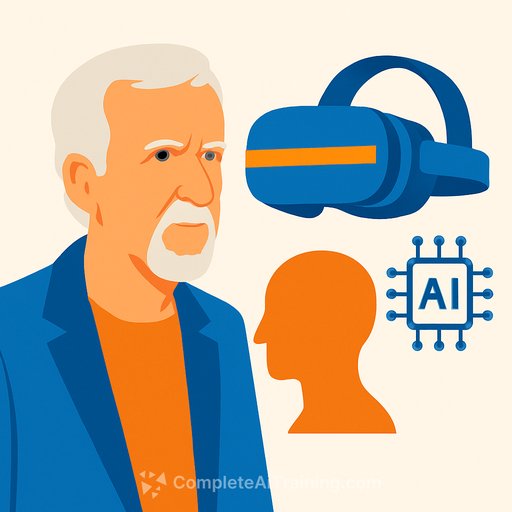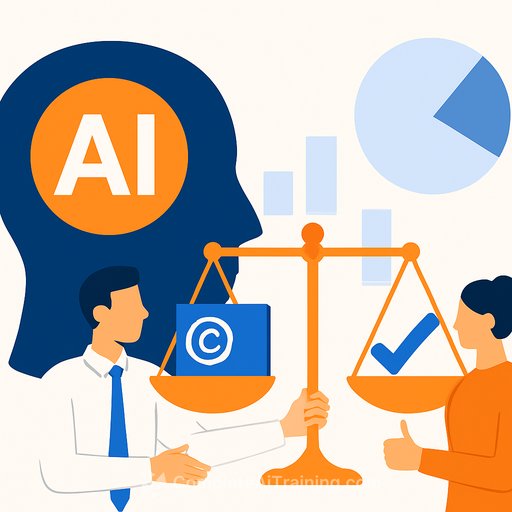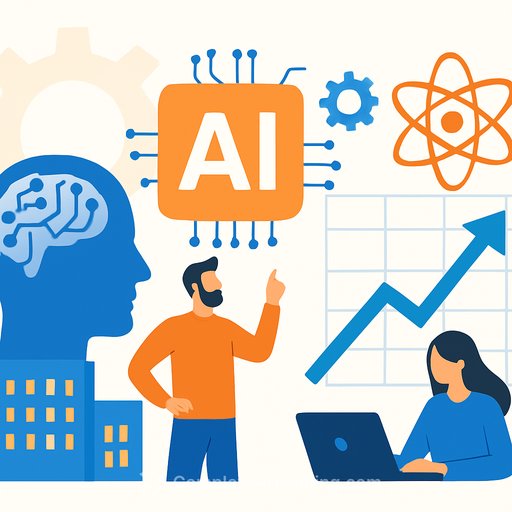James Cameron on AI, creativity, and why headsets will make 3D stick
James Cameron says AI is "just as creative" as people - but it doesn't have a "unique lived experience." That distinction matters. It's also the compass for where 3D storytelling is going: human perspective guiding powerful tools, delivered through devices built for depth.
At Meta Connect, Cameron joined Meta CTO Andrew Bosworth to share the first output of a multiyear partnership between Lightstorm Vision and Meta: an exclusive Avatar 3 preview available in the new Horizon TV app for Quest headsets.
Why Meta + Lightstorm Vision happened
Cameron has spent decades pushing stereoscopic filmmaking. Theatrical 3D worked. 3D TV didn't. Headsets change the equation because you're natively a stereoscopic viewer in a controlled environment.
Lightstorm Vision was set up to restart stereoscopic production at scale. Meta was looking for a partner with deep expertise. As Bosworth put it, they were looking for each other without realizing it.
Headsets vs. 3D TV: what actually makes the difference
- Consistent viewing: Each eye gets a dedicated image with proper calibration. No guesswork with glasses or living room setups.
- Comfort and presence: Adjustable IPD, stable parallax, and a fixed viewing distance reduce strain and keep depth convincing.
- Creative control: Dynamic depth budgets and scene-aware rendering let you guide attention without breaking immersion.
- Distribution: A single app can ship updates and set playback rules, removing the variability that hurt 3D TV.
Translation for creatives: your depth choices land as intended, which means less compromise and fewer technical distractions for the audience.
Cameron's take on generative AI (and how to use it without losing your voice)
AI can generate. It can remix. It can surprise. What it can't do is live your life. That's the edge you bring to the work.
- Use AI to explore breadth: alternate story beats, visual studies, mood boards, temp music, or previs.
- Anchor it with lived detail: your research, field recordings, physical references, and specific character histories.
- Set a "truth filter": if a beat doesn't match your personal or observed experience, it doesn't ship.
- Keep provenance: document what's human-made vs. AI-assisted to maintain trust with audiences and collaborators.
If you want structured upskilling, see AI courses by job for creatives at Complete AI Training or explore tools for generative video at this curated list.
What this means for your next project
- Short-form: immersive teasers, trailers, and music moments built for presence, not just spectacle.
- Narrative: sequences designed around depth cues and eye travel; intimacy through proximity, not just scale.
- Live and events: concerts, sports, and behind-the-scenes with intentional stereo framing and guided attention.
- Education and art: installations that use depth to communicate concepts you can't grasp on a flat panel.
A practical stereoscopic playbook for creatives
Preproduction- Shot list in 3D: plan near, mid, far planes; decide where to place comfort and impact beats.
- Parallax budget: define max on-screen disparity to avoid discomfort; keep fast cuts shallow.
- Blocking for depth: give subjects separation; avoid flat staging and cluttered backgrounds.
- Camera setup: match lenses and alignment; if virtual, configure stereo rigs and convergence in-engine.
- Motion discipline: slow pans, predictable movement, limited z-axis whiplash.
- Light for volume: edge lights and occlusion cues help the brain read depth.
- Depth grading: treat depth like color - balance, isolate, and guide attention.
- UI and subtitles: place at a consistent depth with gentle transitions; no window violations.
- Quality control: test across a range of IPD settings and session lengths.
- Target the device: encode for the headset's resolution, frame rate, and color profile.
- Accessibility: offer comfort settings (reduced depth, seated mode, shorter chapters).
Watch now
Quest owners can watch an exclusive Avatar 3 preview in the Horizon TV app. If you're new to the platform, start here: Meta Quest.
Resources for deeper craft
- Overview of stereoscopy concepts: Stereoscopy
The takeaway for creatives
Headsets finally give stereoscopic stories a reliable home. AI can help you ship more and explore wider, but your lived experience is the differentiator. Build for depth with intention, keep comfort front and center, and let your perspective lead the tools - not the other way around.
Your membership also unlocks:






